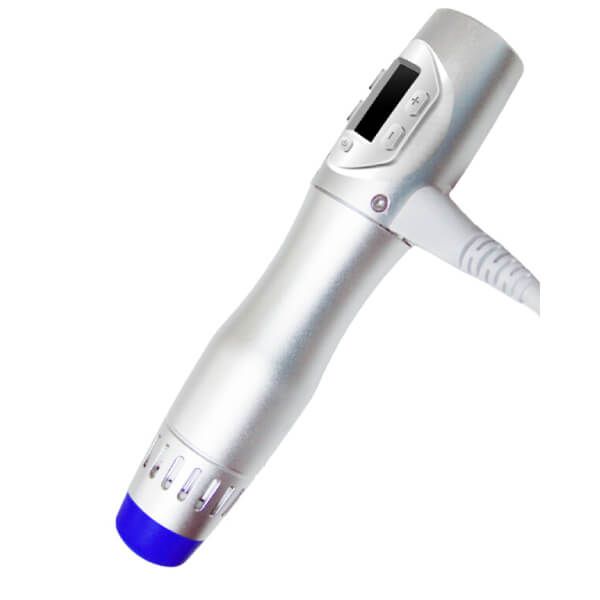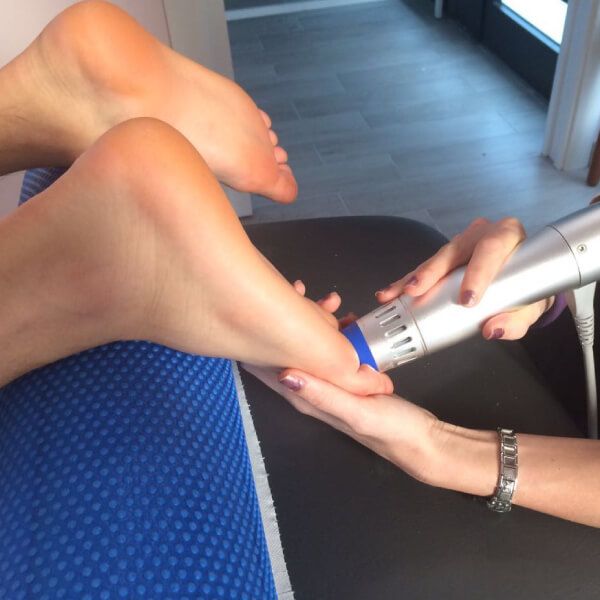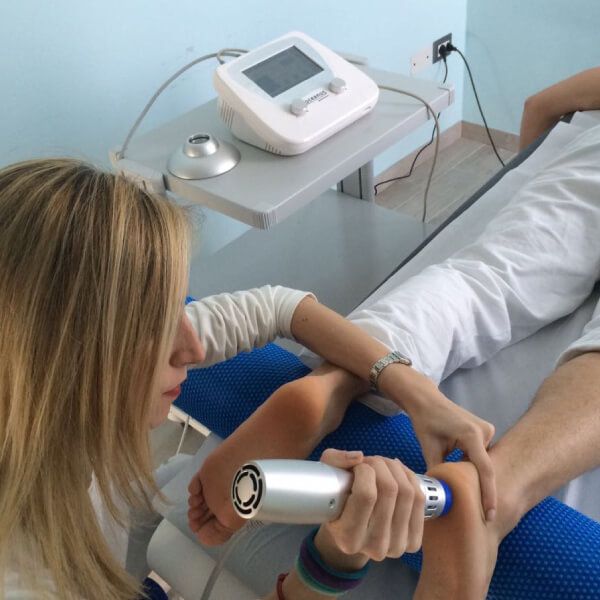 Written by Morgan Hopkins, DPT, CMTPT
Written by Morgan Hopkins, DPT, CMTPT
What do you think when you hear the term “shockwave therapy”? For many, it might seem like some sort of ancient torture technique, but in fact, it is a widespread modality used to facilitate healing for a variety of medical conditions.
With certain studies revealing over 90% of patient satisfaction with the treatment, it is a no-brainer that we take some time to delve into this therapeutic modality including indications for use, potential benefits, and market options. Join us as we unveil the ins and outs of shockwave therapy products.
 | Oceanus PhysioPRO II - Portable Shockwave Therapy Device for Musculoskeletal Pain Relief View Product |
 | Oceanus PhysioPRO - Shockwave Therapy Device for Musculoskeletal Pain Relief View Product |
Shockwave therapy is a non-invasive modality that uses high-intensity acoustic shock waves directed into specific tissues to promote healing. Through induction of a safe amount of stress on the tissue, it helps break up scar tissue, improve microcirculation, and boost local metabolism. It serves as an alternative treatment to surgical intervention or medication management and can be a great adjunct to rehabilitation.

Historically, shockwave therapy has been most commonly used during lithotripsy in the treatment of kidney stones. Growing research, however, has shown great benefits of shockwave therapy for orthopedic conditions and erectile dysfunction as well.
Studies on shockwave therapy point to the therapeutic benefits of reducing inflammation, improving microcirculation, and enhancing collagen production. From rotator cuff pain to plantar fasciitis to greater trochanteric pain syndrome, these benefits promote reduced pain and expedited healing.
In addition to soft tissue injuries, shockwave therapy is also used to promote the healing of stubborn fractures and treat bony necrosis. Growing research now shows, it can be useful for wound healing, particularly in diabetic patients.

The two primary forms of shockwave therapy include focused and radial shockwaves. Both offer varying benefits but differ in their means of energy production, therapeutic applications, and overall impact.
Systems with radial pressure waves tend to be more affordable and generate energy using a pneumatic system. Their waves have the greatest degree of energy at the source which reduces as it travels away from the transmitter. This type of shockwave therapy is most beneficial for the treatment of superficial conditions such as plantar fasciitis or Achilles tendonitis.
Conversely, focused shockwave therapy devices are more effective for deeper treatment areas such as a hip flexor or deep fracture site. Waves can travel up to 12cm and maintain their power throughout the depth of application. The generation of energy involves an electromagnetic field that is created by opposing magnets during application. In addition to pain relief and circulatory benefits, this type of shockwave treatment can also stimulate growth factors and contribute to the release of nitric oxide, promoting anti-inflammatory effects.

Extracorporeal shockwave therapy (ESWT) is a commonly interchangeable term used when referring to shockwave therapy. The added word, extracorporeal, simply indicates that the therapy is performed over the skin.
 | Lotuxs Shockwave Therapy Device View Product |
Erectile dysfunction (ED) is a condition involving poor blood flow to the penis. As previously discussed, one of the greatest therapeutic benefits of shockwave therapy is its ability to promote improved microcirculation and cell permeability. As such, through the direction of specific acoustic shockwaves to the penis, the treatment can enhance local circulation, stimulate the penile tissue and promote the growth of new blood vessels. Although much anecdotal evidence exists in this field, continued research is needed to determine long-term effects and an appropriate comparison of shockwave therapy versus alternative therapies for ED.
 | Oceanus PhysioLITE III - Shockwave Therapy Device View Product |
Shockwave therapy signals the body to kickstart the natural healing process. In doing so, it can offer individuals with joint pain enhanced circulation to affected regions, pain relief, and tissue repair.
Similarly, numerous studies point to the benefit of shockwave therapy in the treatment of tennis elbow. By directly stimulating blood vessel creation and healing it helps sufferers exit the chronic inflammatory state that often occurs in tennis elbow.
Besides joint pain and tennis elbow, research also suggests that shockwave therapy can improve pain ratings, overall function, and healing of inflamed tendons in tendonitis conditions. In one of many studies, results showed improvement in reported Achilles tendinopathy symptoms in 20/23 studied patients.
Finally, shockwave therapy shows promise for individuals suffering from arthritic pain through the modification of cartilage and subchondral bone. With 58.5 million people suffering from arthritis in the US alone, it provides hope to reduce daily pain and improve functional mobility.
The bottom line, shockwave therapy can be useful for a variety of conditions through an increase in cellular metabolism, revascularization, pain reduction, and enhanced circulation.
Yes! With all of its benefits, shockwave therapy is also non-invasive and side effects are minimal at most. That said, there are a few contraindications to the treatment which should be maintained:
If you are unsure if the treatment is right for you, speak with your healthcare provider before initiating the therapy.

So we’ve reviewed treatment indications and all the wonderful benefits, but how much does it cost? Unfortunately, this treatment is rarely covered by insurance however increasing options are coming onto the marketplace both in the clinic setting and at home. Clinic sessions will generally run you $400-$500 per session therefore home machines are a great option for those looking for long-term use.

Yes, as mentioned there are many portable machines on the market today, perfect for home use.

Depending on the condition, results can be expected within one to three months. Of course, it is important that alongside shockwave therapy, you address the underlying faulty biomechanics that led to the condition to achieve long-lasting benefits.
Shockwave therapy provides promising benefits for many patient populations. Its therapeutic effects are widespread and include enhanced healing, improved circulation, and pain reduction. As part of a comprehensive treatment strategy, shockwave therapy is a reliable modality that can get you back on track to optimal well-being.
For more information including all things, shockwave therapy, check out Rehabmart’s curated collection of products.
While you’re there, feel free to browse through our expert-guided blogs, buying guides, and informational articles at Caregiver University.
>> Shop Shockwave Therapy <<
Morgan Hopkins is a licensed doctor of physical therapy and freelance medical writer. She practiced clinically in outpatient orthopedics for 8+ years specializing in intramuscular dry needling, dance medicine, and post-operative care. Morgan seeks to be a leader in the continued shift toward preventative healthcare, helping people optimize movement now so they can move for years to come. She is a firm believer in complementary therapies, holistic wellness, and functional fitness and is thrilled to be able to educate others through Rehabmart’s platform.